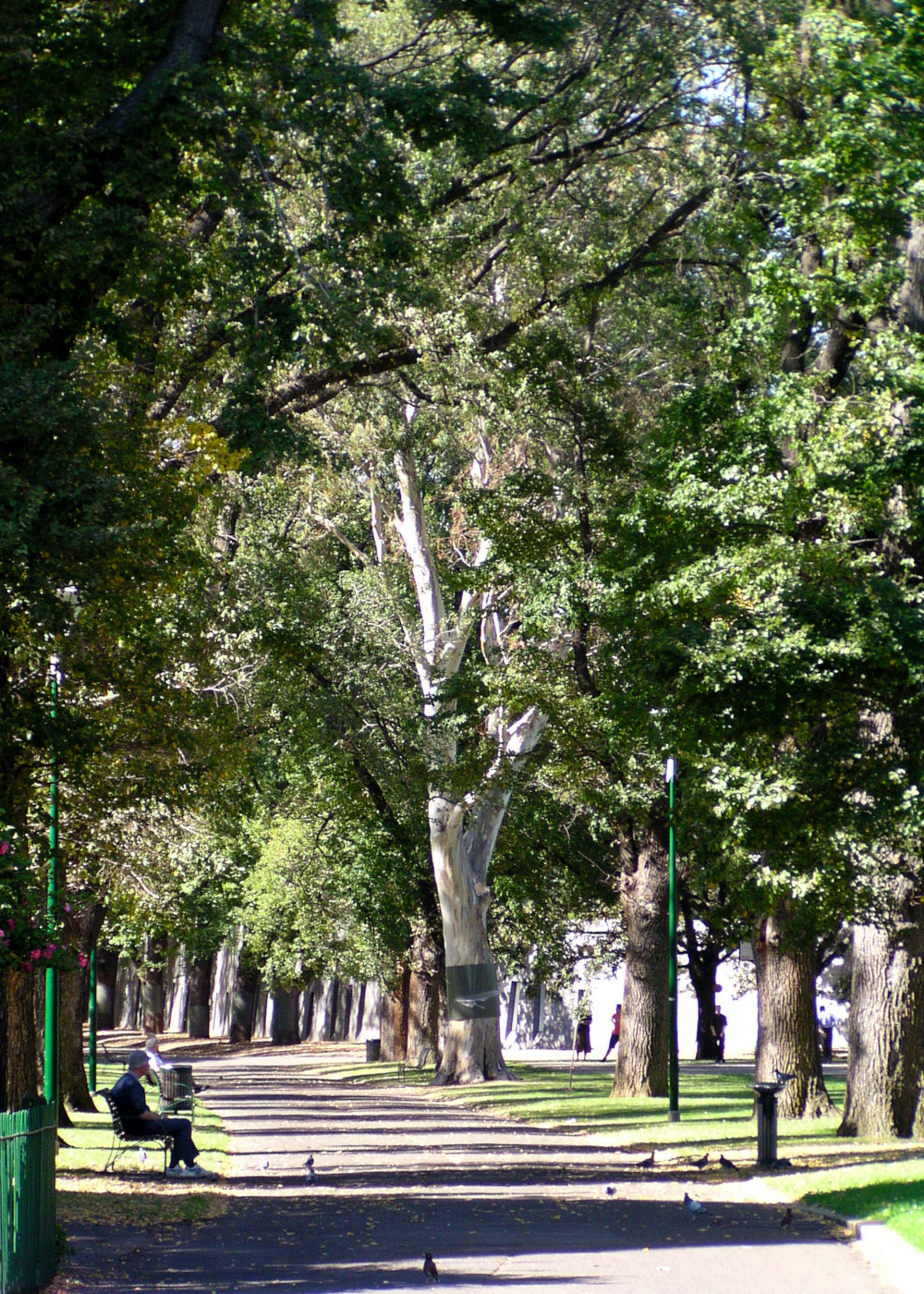Urban forests are crucial in a world where people are mostly living in cities. Urban forests provide important ‘ecosystem services’ such as cooling and slowing storm water flows. Urban forests also provide habitat for a diverse range of plants and animals, and can help people to connect to nature. However, access is not equal – people in disadvantaged areas tend to have poorer access to urban nature. We can make a difference to people’s health and wellbeing by improving equitable access to green space. We need to build diverse urban forests that are able to provide a range of benefits and to meet the needs of a diverse community. Diversity also leads to resilience – the ability of the urban forest to continue to provide these benefits in a world that is changing due to climate change and urban growth.
At the same time, we are in the midst of a biodiversity crisis. Extinction rates are much higher due to widespread habitat clearing, climate change, changed disturbance regimes (e.g. fire, flooding), competition from introduced species and novel pests and diseases. While humans are often seen as a threat to species, increasingly we are realising that saving species depends on the actions of people – urban dwellers, farmers, business owners and government. Many threatened species are found in cities. We need to support people to live and work in ways that protect and support rare and threatened species.
Our Expertise
Dave was a member of Australia’s Threatened Species Scientific Committe 2015-2019, advising the Minister for the Environment on matters relating to the listing of threatened species and ecological communities and key threatening processes.
NATURA – Nature-based Solutions to Urban Resilience in the Anthropocene: Oceania region co-lead (with Brenda Lin) and Coordinating Committee member (2022-)
Extensive teaching experience on environmental management, biodiversity conservation and urban landscapes at undergraduate and postgraduate levels at the University of Melbourne and University of Tasmania.
Projects
In a project led by Chris Ives and Pia Lentini, we examined the occurrence of threatened species in Australian cities, finding that many threatened species are found in cities and depend on actions in cities for their survival. This work was conducted as part of the Clean Air and Urban Landscape Hub of the National Environmental Science Program.
For the Royal Botanic Gardens Victoria, we identified the climate suitability of thousands of species of rare and threatened plants from across Australia – listed under the EPBC Act or under state and territory legislation.
Selected publications
Reports
Elliot, C., Kendal, K., Bush, J., Leslie, G., Oke, C., Ramalho, C., Caffin, M., Croeser, T., Entwisle, T., Fastenrath, S., Foley, A., Jones, R., Lee, G., Livesley, S., Ordonez, C., Phillips, C., Reid, D., Rowe, H., Shears, I., Thom, J., Williams, N., Wilson, A., Young, C. (2019) An Urban Forest Horizon Scan in Melbourne, Australia. Report for the Clean Air and Urban Landscapes Hub. The University of Melbourne, Melbourne
Elliot, C., Kendal, D., Bush, J., Leslie, G., Oke, C., Auty, K., Barnett, G., Brack, C., Brecknell, A., Farrelly, S., Frawley, M., Gibbons, P., Ikin, K., Ryan, J., Salt, D., Sides, T., Staas, L. (2019) An Urban Forest Horizon Scan in Canberra, Australia. Report for the Clean Air and Urban Landscapes Hub. The University of Melbourne, Melbourne
Academic Publications
Kendal, D., Dobbs, C., Gallagher, R.V., Beaumont, L.J., Baumann, J., Williams, N.S.G., Livesley, S.J. (2018) A global comparison of the climatic niches of urban and native tree populations, Global Ecology and Biogeography 27(5):629-637
+Threlfall, C., +Kendal, D. (2018) The distinct ecological and social roles that wild spaces play in urban ecosystems, Urban Forestry & Urban Greening 29 (1), 348-356
Dobbs, C., Nitschke, C. & Kendal, D. (2017) Assessing the drivers shaping global patterns of urban vegetation landscape structure. Science of the Total Environment, 592, 171–177.
Lohr, V. I., Kendal, D. & Dobbs, C. (2016). Urban Trees Worldwide Have Low Species and Genetic Diversity, Posing High Risks of Tree Loss as Stresses from Climate Change Increase, ActaHort, 1030
Dobbs, C., Kendal, D., & Nitschke, C. (2014). Global drivers and tradeoffs of three urban vegetation ecosystem services. Plos ONE 9(11): e113000. doi:10.1371/journal.pone.0113000
Kendal, D., Dobbs, C., & Lohr, V. (2014) Global patterns of diversity in the urban forest: is there evidence to support the 10/20/30 rule? Urban Forestry & Urban Greening, 13, 411-417
Kendal, D., Williams, N.S.G. & Williams, K.J.H., (2012). Drivers of diversity and tree cover in gardens, parks and streetscapes in an Australian city. Urban Forestry & Urban Greening. 11(3): 257–265

